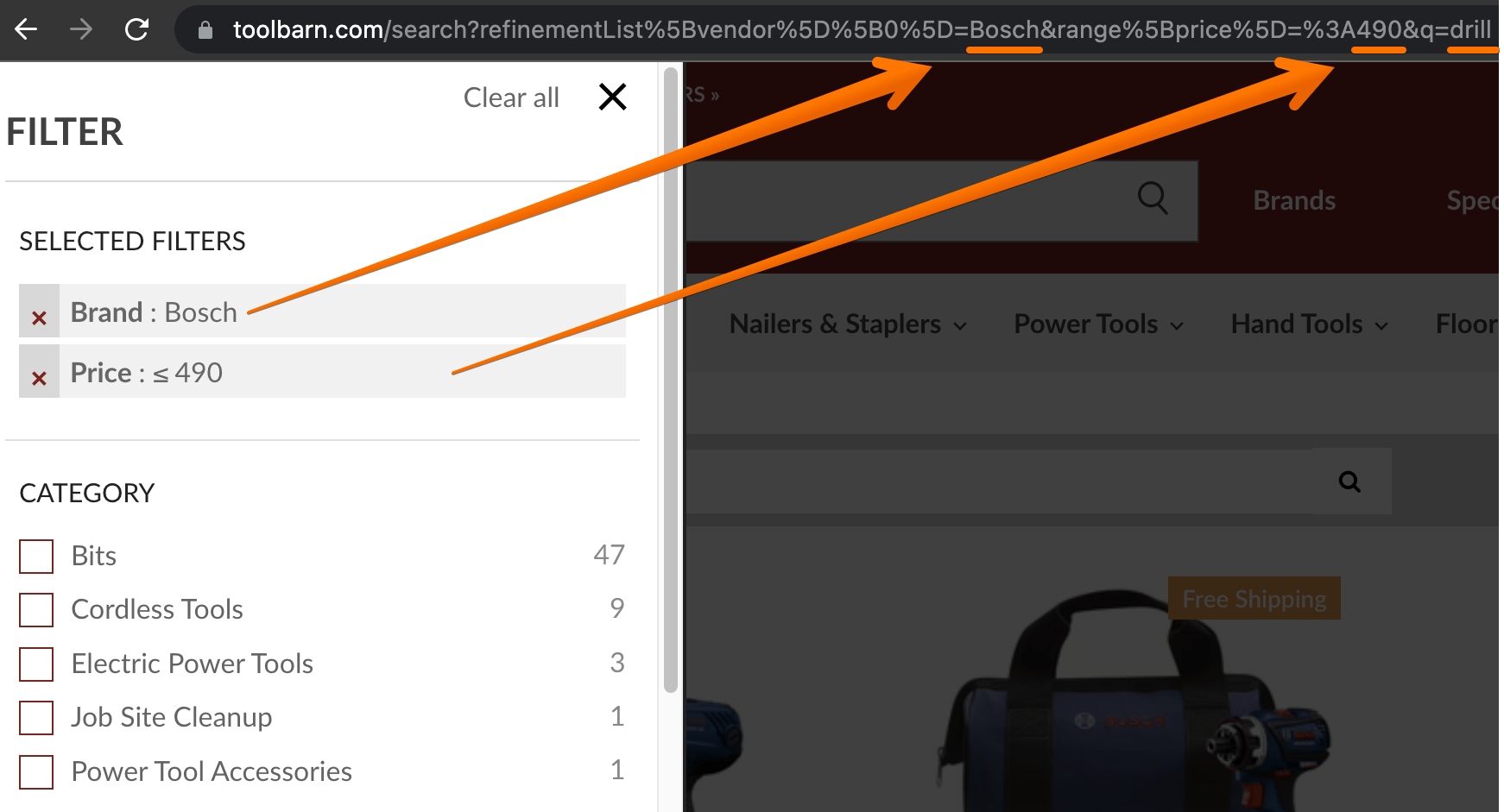Dynamic URL
What is a Dynamic URL?
A dynamic URL is a URL of a web page dynamically generated from the database. Dynamic URLs contain parameters that request data from the database to populate the page content.
Dynamic URLs are widely used in eCommerce sites where all the information about the products is stored in the database and pulled when people search for products or apply filters.
You can spot dynamic URLs by looking for characters like: ?,=, &.
Here’s an example of a dynamic URL from a website selling hand and power tools:

Ahrefs is a database-driven SEO tool, so it also uses dynamic URLs.

Why are dynamic URLs important?
Dynamic URLs are extremely important for database-driven websites because they enable them to build and serve pages dynamically based on custom input parameters.
Here’s a good example of a dynamic URL from an e-commerce website called The Sill that sells plants:
https://www.thesill.com/collections/live-plants?Size=Medium&Light=LowLight&Benefit=EasyCare
This URL is based on a specific “Live Plants” section of the store. Within this area, the site gives users some options for filtering results based on size, light, and benefit.

Say you choose a “medium” size, a “low light” amount of light, and an “easy care” benefit. With these options selected, all filters applied on the left are turned into URL parameters, sent to the server, and used to build the resulting page accordingly.
The products on the page are based on user inputs, and the page is created on the fly thanks to the dynamic URL. This could not be achieved with static URLs.
What are the cons of dynamic URLs?
From an SEO standpoint, there are a few cons related to dynamic URLs that you should be aware of.
1. They don’t look informative.
It’s difficult to tell at a glance what a dynamic URL page is about because it’s stuffed full of parameters. Compare that to a static URL that’s clearly tailored to a search term, such as https://ahrefs.com/blog/link-building for the query “link building.”

Static URLs help users and search engines better understand the content of the pages.
2. They might cause duplicate content issues.
Because of how parameters work within dynamic URLs, it’s possible for multiple identical or near-dential pages to have different URLs, which can be an SEO issue.
That is why it is very important to have canonical tags set up on dynamic pages.
3. They can cause problems with backlinks.
Users who try to link to your dynamic URLs can crop the URL parameters when pasting, which can lead to broken backlinks.
Will dynamic URLs be crawled and indexed?
The short answer is “Yes!”
Google has no issues crawling and indexing dynamic URLs.
However, static URLs might have a slight advantage in clickthrough rates because they are easily readable.
Should I replace the dynamic URLs with static ones?
The short answer is “No!”
You can indeed create URL rewriters that make dynamic URLs look static, but it won’t give you any significant benefit. Today’s search engines are smart enough to crawl dynamic URLs and understand the purpose of URL parameters.
In addition, you risk damaging the ranking of your dynamic URLs if you don’t correctly create and maintain rewrites of your dynamic URLs to static-looking URLs. A better approach is to create shorter dynamic URLs by only including the necessary parameters in the query string.
You can learn more about the SEO aspect of dynamic URLs vs static URLs straight from the Google Search Central Blog.